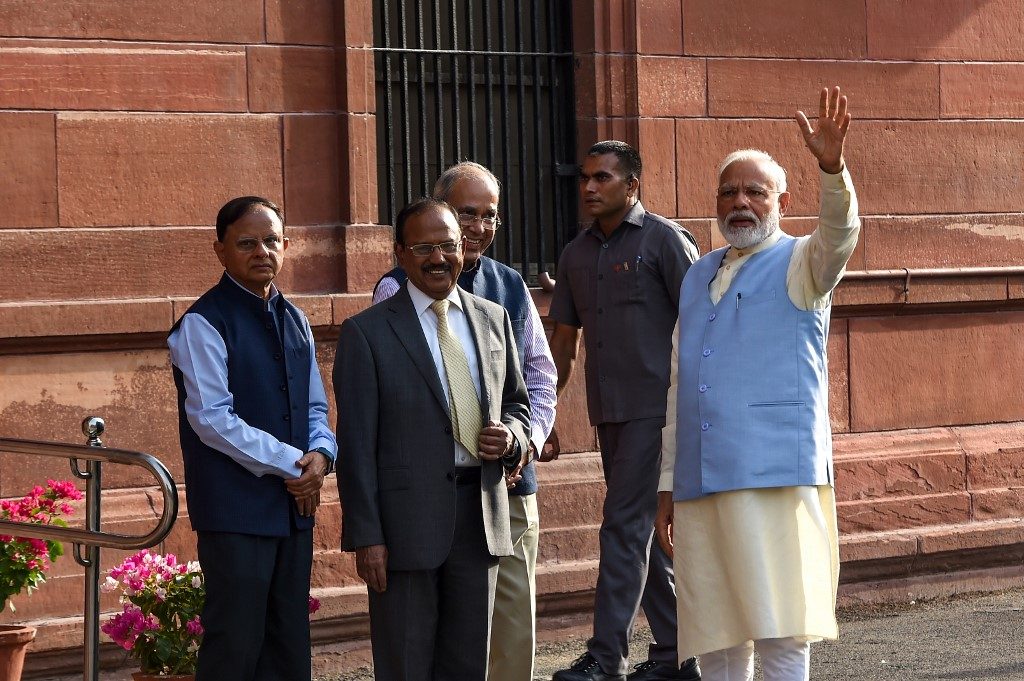SUMMARY
This is AI generated summarization, which may have errors. For context, always refer to the full article.

NEW DELHI, India – India’s Prime Minister Narendra Modi on Friday, May 31, named his trusted aide Amit Shah to the key home affairs ministry as part of a major cabinet shakeup for his second term in office.
Nirmala Sitharaman moved from defense to become finance minister in a second shock, while career diplomat S. Jaishankar became foreign minister.
Hardline Hindu nationalist Shah was the president of the right-wing Bharatiya Janata Party (BJP) who masterminded Modi’s second straight landslide victory in the country’s national election.
Shah, 54, will now pursue Modi’s nationalist agenda in internal security, immigration and other key national issues.
A controversial figure, Shah was accused of ordering police to carry out 3 extrajudicial killings in his home state of Gujarat in 2005. He was banished from the western state for two years before being cleared in 2014 for lack of evidence.
Recently he hit the headlines after comparing illegal immigrants to “termites” that must be thrown out of the country.
But he has been a close confidante of Modi for nearly two decades and some analysts say Shah is now in place to take over the party if Modi stood down.
“Congratulations to @AmitShah ji who transformed BJP into one of the largest political organizations in the world & will now play a bigger role in building #NewIndia,” tweeted Shah’s cabinet colleague Smriti Irani.
Irani, who defeated opposition Congress chief Rahul Gandhi in his family bastion of Amethi in the election, was handed the ministry of women and child development.
Facing major challenges with the economy, job creation and a farm debt crisis, Modi replaced around 3 dozen ministers and deputies from the last administration, bringing in many new lawmakers.
Major rejig
Sitharaman, 59, became India’s first full-time woman finance minister after a similar landmark stint as defense minister. Former premier Indira Gandhi had briefly held the defense and finance portfolios in the 1970s.
As finance minister Sitharaman will be expected to steer India’s course through reforms and arrest an economic slowdown in Asia’s third-largest economy.
Sithamaramn could get an early idea of economic difficulties ahead when economic growth figures for January-March are released later Friday.
The previous finance minister, Arun Jaitley, asked not to be considered for a government post because of ill health.
The induction of Jaishankar, a China expert and a former ambassador to Washington, as the new foreign minister was seen as a sign that Modi will put more emphasis on diplomacy in the sensitive area around India in his second term.
Jaishankar, who was the top foreign ministry official until his retirement last year, was an influential advisor to Modi on diplomacy during his first 5 years in power.
Jaishankar took the mantle from Sushma Swaraj, a party veteran who underwent a kidney transplant in 2016 and has been beset by poor health.
Modi also set up a new ministry of water power in keeping with his promise to make safe drinking water a priority for his government.
Modi, 24 cabinet rank ministers and more than 30 deputy ministers were sworn in at the presidential palace on Thursday, May 30.
Presidents and prime ministers from neighboring Bangladesh, Sri Lanka, Nepal and the Maldives were present, but arch-rival Pakistan was not among those invited. – Rappler.com
Add a comment
How does this make you feel?
There are no comments yet. Add your comment to start the conversation.